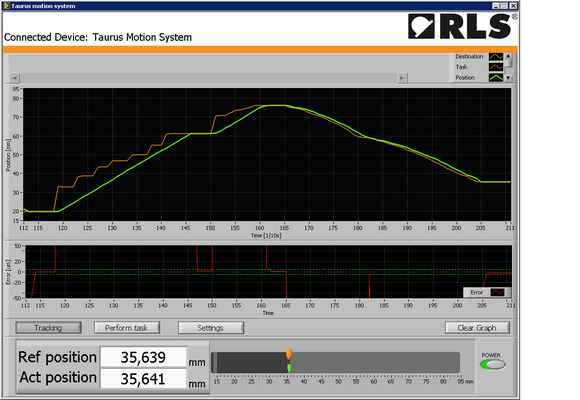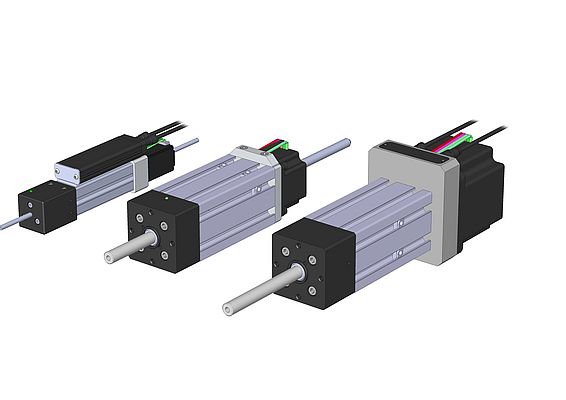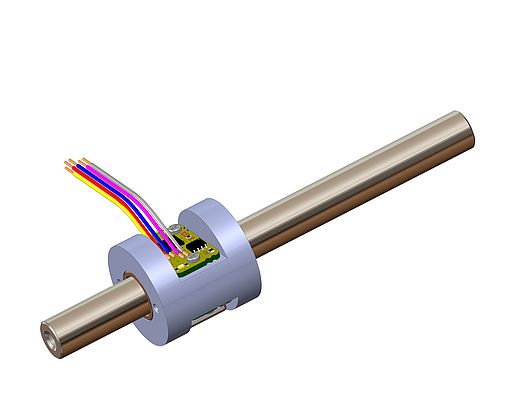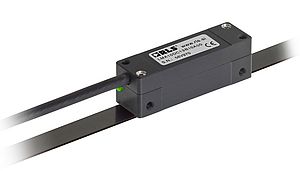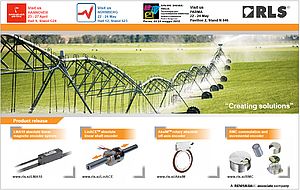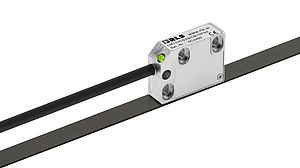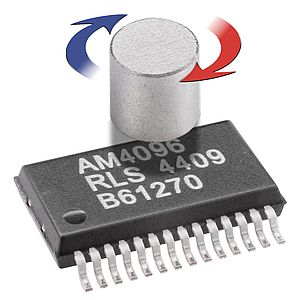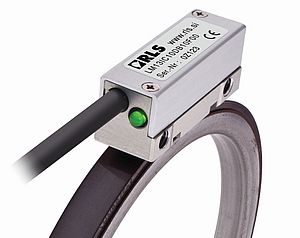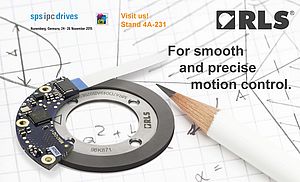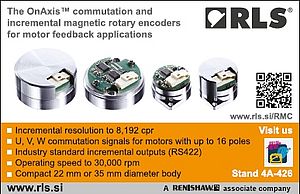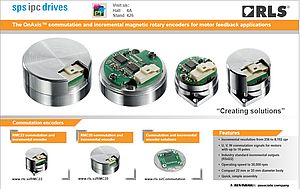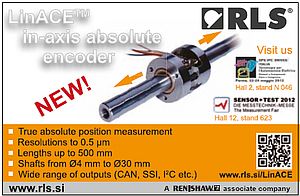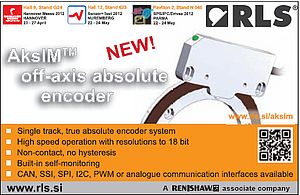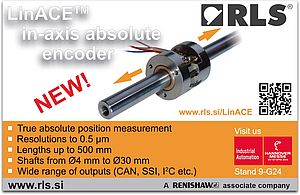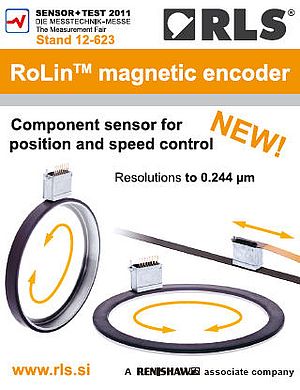RLS has taken a step further in linear actuator applications with the introduction of the new true absolute LinACE magnetic encoder which uses its unique direct on-the-spot position reading of the encoded actuator shaft to provide accurate closed-loop positioning with minimum space consumption. These features reinforce the new in-axis magnetic encoder range which brings a range of user benefits including reduced set-up times, small space consumption and improved position control.
To demonstrate the whole potential of LinACE encoder, RLS has developed the Taurus linear actuator with an integrated encoder and controller. With its compact, yet robust design and best environmental protection, LinACE, fitted to a closed-loop motion system such as RLS' new Taurus, brings reliable solutions for harsh environments.
In an assembly no larger than that of usual open loop system actuators the Taurus motion system incorporates an electric motor, an encoded actuator shaft, the LinACE encoder readhead and a controller in a single compact closed-loop linear actuator.
Although combining an encoder with a closed-loop system is no news to the linear actuator world, RLS have taken a step further by developing technology that enables the encoder to read the absolute code written in a solid steel chrome-coated actuator shaft.
The innovative system feature, to obtain absolute position information by reading directly off the actuator axis, eliminates the effects of clearance and elastic deformation between the actuator's nut and spindle, as well as spindle's thermal expansion on measurement accuracy. The in-axis measuring principle also excludes the Abbe error.
In-axis absolute linear encoder
The heart of Taurus' innovation is an extremely robust absolute linear LinACE encoder system. It has been designed for integration into hydraulic, pneumatic and electromechanical actuators as a feedback element for position/velocity closed loop applications.
The LinACE encoder consists of a sliding encoder readhead module and an encoded actuator shaft. The sensing core of the readhead is a Hall sensor array ASIC. The readhead housing is made of stainless steel with two bronze bearings pressed-in from each side. With the sensor module positioned in between the bearings, the optimal alignment between the sensor module and the shaft is maintained, thus ensuring best performance.
The encoded actuator shaft is used as a load-bearing functional part of the motion system and as an information carrier read by the readhead. It is made of hardened steel, which is magnetic, with the information pattern written into the surface using non-magnetic material (like hard chrome or copper). Since the pattern encompasses the whole circumference, the encoder does not lose its position even if the shaft rotates. Finally, the shaft surface is hard chrome plated and the pattern is hidden. The encoded actuator shaft is immune to external magnetic fields and is perfectly suited for the harshest of environments.
Easy integration into existing designs
With a combined package of user-friendly features the Taurus motion system allows for easy integration into existing machines or automation lines. The absolute position measurement enables the system to be switched on without the need for initialization or homing.
The controller receives the desired position from the supervising system (PC or PLC). The Taurus' closed loop controls the actual position of the actuator axis according to the received desired position. The desired position is received through bi-directional serial high speed USB port (optional CAN bus, RS232 or RS 485). The dynamics of the actuator control depends on the selected Taurus model and actuated load.
The control is done by setting the speed of an electric motor depending on the position error. This kind of control algorithm, where the motor itself takes the function of an integrator, is known as velocity (or incremental) algorithm. By using a velocity algorithm, no error integration is needed to perform stable regulation with no stationary state error. The proportional gain of the controller takes the role of the system's integral gain and the derivative gain of the controller takes the role of the system's proportional gain. For the derivative component, a second derivative of the error is needed. The proportional and derivative constants are pre-adjusted but can also be readjusted by the user. Other parameters that can easily be adjusted to suit the nature and demands of the user application are maximum speed, acceleration and power of the electric motor.
With the Taurus' combination of a controller and the LinACE absolute encoder repeatable positioning within ±5 µm is achieved.
Additionally, the controller can output the current position of the actuator and can therefore be used as a measuring device. For specific tasks, the controller offers performance modes such as stopping at an obstacle, adjusting to the (unpredictable) loss of step failure or automatically adjusting the parameters of the process to suit the demands of a certain task.
Graphical user interface (GUI)
Taurus GUI for Windows OS provides a user-friendly interface for the Taurus linear actuator controlling. It enables the user to set the desired position and read the actual position. Additionally, it enables to preset multipoint positioning tasks for the actuator. It allows the access to the system parameters (velocity limit, acceleration limit, motor power etc.) and to control the parameters (P, I and D gains). The interface displays the desired position, the actual position and the position error in the form of a time-position plot.
The software enables the user to:
· set the desired position,
· display the desired and the actual position, as well as position error,
· set regulation parameters (P, I and D gains),
· set system parameters (velocity, acceleration and deceleration limit),
· store and load regulation and system parameter settings,
· preset a multipoint positioning task to be performed as a sequential or a continuous regulation task,
· continue the task from the point of interruption in case of a communication breakdown or temporary power loss.
Application
With its wide range of available shaft sizes and a range of selectable communication interfaces the Taurus motion system is suitable for use in different industrial sectors (medical, transportation, renewal energy, civil enginnering, industry). RLS also offers custom design solutions, providing the most accurate, light-weight, robust and costeffective motion systems.


